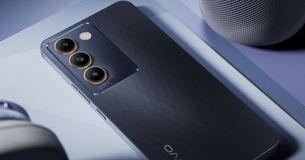Mobiles Features
- Audio Features
- Auto Features
- Cameras Features
- EV Features
- Gaming Features
- Internet
- Miscellaneous Features
- Mobiles Features
- Personal Computing Features
- Quotes and Captions Features
- Science Features
- Smart home/ IoT Features
- Software & Apps Features
- Sports
- Tablets Features
- Telecom Features
- TVs Features
- Utilities Features
- Wearables Features




![[MSP Tech Insights] Top 5 Mobile Brands in India Q1 2024: Samsung Reigns Supreme](https://assets.mspimages.in/gear/wp-content/uploads/tr:w-324,h-160,c-at_max/2024/04/Top-Smartphone-Brands-1.jpg)

![[MSP Tech Insights] Top 10 mobile phones in India in March 2024: vivo V30 and Nothing Phone 2a Were The Most Searched Smartphones](https://assets.mspimages.in/gear/wp-content/uploads/tr:w-324,h-160,c-at_max/2024/03/Header.png)






